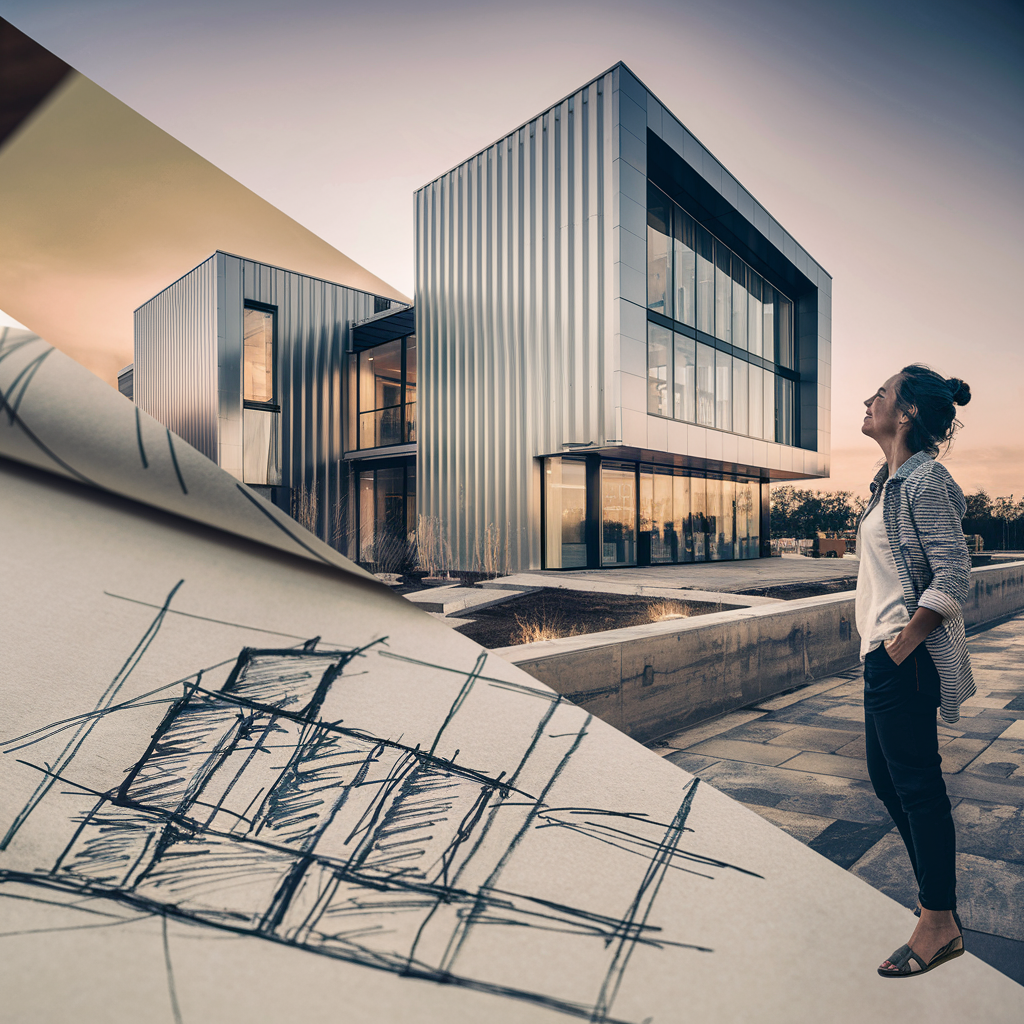Outline
1. Introduction
– Definition of ecological architecture
– The urgency of addressing environmental issues
2. The State of Our Planet
– Current environmental challenges
– Impact of traditional architecture on the environment
3. Principles of Ecological Architecture
– Sustainability
– Energy efficiency
– Use of renewable resources
4. Benefits of Ecological Architecture
– Environmental benefits
– Economic benefits
– Health and well-being
5. Sustainable Building Materials
– Recycled materials
– Natural materials
– Innovative materials
6. Energy-Efficient Design
– Passive solar design
– Insulation and thermal mass
– Energy-efficient appliances
7. Water Conservation Strategies
– Rainwater harvesting
– Greywater systems
– Low-flow fixtures
8. Green Roofs and Walls
– Benefits of green roofs
– Types of green walls
– Case studies of successful implementations
9. Renewable Energy Integration
– Solar panels
– Wind turbines
– Geothermal energy
10. Case Studies of Ecological Architecture
– Innovative ecological buildings around the world
– Lessons learned from successful projects
11. Challenges in Implementing Ecological Architecture
– Cost considerations
– Regulatory hurdles
– Public perception and acceptance
12. Future Trends in Ecological Architecture
– Advances in technology
– Increased adoption of sustainable practices
– Predictions for the future
13. How to Get Started with Ecological Architecture
– Tips for Homeowners
– Advice for builders and architects
– Resources for further learning
14. FAQs
– What is ecological architecture?
– How does ecological architecture benefit the environment?
– Are ecological buildings more expensive to construct?
– What are some examples of ecological building materials?
– How can I make my existing home more eco-friendly?
Ecological Architecture: MOTHER EARTH IS ANGRY?

Introduction
Mother Earth is sending us signals, and they’re not subtle. Wildfires, floods, melting ice caps—our planet is in distress. But there’s a glimmer of hope in the form of ecological architecture. This approach to building design focuses on sustainability, energy efficiency, and harmony with nature. Let’s dive into why ecological architecture is essential and how it can help soothe our angry planet.
The State of Our Planet
Our environment is facing unprecedented challenges. Climate change is accelerating, biodiversity is dwindling, and pollution is rampant. Traditional architecture contributes significantly to these problems through high energy consumption, waste production, and the use of non-renewable resources. Buildings alone are responsible for a substantial portion of global carbon emissions.

Principles of Ecological Architecture
Sustainability
Ecological architecture is all about sustainability. It aims to reduce the negative impact of buildings on the environment by using resources more efficiently and creating healthier living spaces.

Energy Efficiency
Designing for energy efficiency means reducing the amount of energy required to heat, cool, and power buildings. This can be achieved through smart design choices and the use of advanced technologies.

Use of Renewable Resources
Materials and energy sources that can be replenished naturally are at the heart of ecological architecture. This includes everything from using recycled building materials to harnessing solar power.

Benefits of Ecological Architecture
Environmental Benefits
By reducing resource consumption and minimizing waste, ecological architecture helps mitigate climate change and protect ecosystems. Green buildings typically have a smaller carbon footprint and use fewer natural resources.
Economic Benefits
Though the initial investment may be higher, ecological buildings often save money in the long run through lower energy bills and reduced maintenance costs. They also tend to have higher property values.

Health and Well-being
Living and working in eco-friendly buildings can improve physical and mental health. These structures often have better air quality, more natural light, and use non-toxic materials, contributing to a healthier indoor environment.

Sustainable Building Materials
Recycled Materials
Using materials that have been repurposed from other buildings or industrial processes can significantly reduce the environmental impact of construction. This includes recycled steel, reclaimed wood, and reused bricks.

Natural Materials
Materials like bamboo, straw bales, and rammed earth are not only sustainable but also have excellent insulating properties. They reduce the reliance on synthetic materials and support a more organic connection to the environment.
Innovative Materials
New materials, such as those derived from agricultural waste or designed for superior energy efficiency, are continually being developed. Innovations like bio-concrete and mycelium-based insulation are paving the way for greener construction.

Energy-Efficient Design
Passive Solar Design
Harnessing the power of the sun can drastically cut energy costs. Passive solar design involves strategically placing windows, walls, and floors to collect, store, and distribute solar energy in the form of heat in the winter and reject solar heat in the summer.

Insulation and Thermal Mass
Proper insulation keeps buildings warm in the winter and cool in the summer, reducing the need for artificial heating and cooling. Materials with high thermal mass, like concrete or stone, absorb and store heat during the day and release it at night.
Energy-Efficient Appliances
Utilizing appliances and systems that use less energy without compromising performance is crucial. This includes everything from LED lighting and energy-efficient HVAC systems to smart thermostats and advanced home automation systems.

Water Conservation Strategies
Rainwater Harvesting
Collecting and storing rainwater for use in irrigation, flushing toilets, and even drinking water (with proper filtration) can greatly reduce the demand on municipal water supplies.

Greywater Systems
Greywater systems recycle water from baths, sinks, and washing machines for use in landscaping and toilets, reducing the overall water consumption of a building.
Low-Flow Fixtures
Installing low-flow toilets, showerheads, and faucets can cut water use significantly without sacrificing performance or comfort.

Green Roofs and Walls
Benefits of Green Roofs
Green roofs, covered with vegetation, provide insulation, reduce storm water runoff, and improve air quality. They also create habitats for wildlife and can significantly enhance urban aesthetics.

Types of Green Walls
Green walls, or living walls, can be either freestanding or attached to buildings. They come in various forms, including modular panels and vertical gardens, and offer similar benefits to green roofs by improving insulation and air quality.
Case Studies of Successful Implementations
Cities around the world are adopting green roofs and walls with impressive results. For instance, the Bosco Vertical in Milan and the California Academy of Sciences in San Francisco showcase the potential of integrating nature with architecture.

Renewable Energy Integration
Solar Panels
Photovoltaic (PV) panels convert sunlight directly into electricity. They can be installed on rooftops, facades, or even integrated into building materials like windows.

Wind Turbines
For locations with consistent wind patterns, small-scale wind turbines can provide a renewable source of electricity, further reducing reliance on fossil fuels.

Geothermal Energy
Geothermal systems use the stable temperatures underground to heat and cool buildings, offering a highly efficient and sustainable energy solution.

Case Studies of Ecological Architecture
Innovative Ecological Buildings Around the World
Buildings like the Edge in Amsterdam, known as the most sustainable office building in the world, and the Bullitt Center in Seattle, designed to be net-positive in energy, serve as inspiring examples of what’s possible with ecological architecture.
Lessons Learned from Successful Projects
These projects demonstrate the importance of integrating sustainability from the very beginning of the design process, the benefits of using cutting-edge technologies, and the need for collaboration among architects, engineers, and environmental scientists.

Challenges in Implementing Ecological Architecture
Cost Considerations
While the long-term savings are significant, the initial costs of ecological architecture can be a barrier. However, these costs are decreasing as technologies advance and become more widespread.
Regulatory Hurdles
Building codes and regulations can sometimes lag behind the innovations in ecological architecture, posing challenges for builders and designers. Advocacy and education are crucial to overcome these barriers.

Public Perception and Acceptance
There is still a learning curve for the general public regarding the benefits and feasibility of ecological architecture. Raising awareness and showcasing successful projects can help shift perceptions.
Future Trends in Ecological Architecture
Advances in Technology
As technology continues to evolve, new materials, construction techniques, and energy systems will further enhance the sustainability and efficiency of buildings.
Increased Adoption of Sustainable Practices
More governments and organizations are recognizing the importance of sustainable building practices, leading to greater adoption and more stringent environmental standards.
Predictions for the Future
The future of architecture lies in creating buildings that not only minimize harm to the environment but also actively contribute to its restoration. Expect to see more net-zero and net-positive buildings as the norm rather than the exception.

How to Get Started with Ecological Architecture
Tips for Homeowners
Start small by making energy-efficient upgrades, such as installing better insulation, using LED lighting, and adding solar panels. Every step towards sustainability counts.
Advice for Builders and Architects
Integrate ecological principles into your designs from the outset. Stay informed about new materials and technologies, and collaborate with experts in sustainability.
Resources for Further Learning
Organizations like the U.S. Green Building Council and the International Living Future Institute offer a wealth of information and certification programs to help you on your journey toward ecological architecture.

FAQs
What is ecological architecture?
Ecological architecture is a design philosophy that prioritizes sustainability, energy efficiency, and the use of renewable resources to minimize the environmental impact of buildings.
How does ecological architecture benefit the environment?
It reduces carbon emissions, conserves natural resources, and creates healthier living spaces by using sustainable materials and energy-efficient technologies.
Are ecological buildings more expensive to construct?
While initial costs can be higher, ecological buildings often save money in the long term through reduced energy bills and maintenance costs, and they tend to have higher property values.
What are some examples of ecological building materials?
Recycled materials (like steel and wood), natural materials (such as bamboo and rammed earth), and innovative materials (including bio-concrete and mycelium-based insulation).
How can I make my existing home more eco-friendly?
Implement energy-efficient upgrades, install solar panels, use low-flow water fixtures, and consider green roofs or walls to reduce your home’s environmental footprint.
